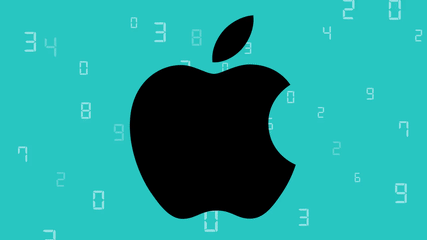Apple’s new privacy protection made me sigh.
Marketers dodged a downhill-rolling boulder with Google’s announcement to stop third-party tracking, only to find another serious obstacle (Apple’s new policy) right behind it.
Apple’s Mail Privacy Protection blocks email senders from knowing if email recipients opened their email. It also masks the IP address so it can’t be linked to other online activity or used to determine location.
Apple privacy protection in iOS 15 rolls out as early as September 2021. Read the full details here.
Ultimately for marketers, the upgrade means less accuracy with email open rates.
What exactly happened?
When you first open the Apple Mail app, you will get a message prompting you to either “Protect Mail activity” or “Don’t protect Mail activity.”
But this will not be the default.
You will have to actively choose. However, based on the 4% opt-in to ad tracking from Apple’s App Tracking Transparency tool and the language around the Mail Privacy Protection options, it’s highly likely we’ll see similar opt-in rates for email tracking.
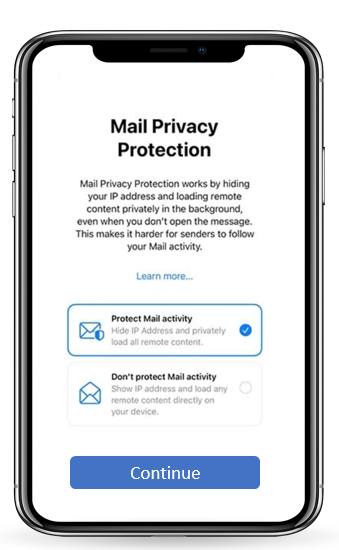
How it works
Apple will first route emails through a proxy server to pre-load message content—including tracking pixels—before serving to readers (even if readers don’t open those emails). This will distort email analytics, showing as if all Apple emails have been opened. According to Litmus testing, the Apple device must be on WiFi with Mail running in the background.
This affects any email opened from the Apple Mail app on any device—no matter which email service is used, such as Gmail or a work account. On the other hand, this shouldn’t affect other email apps used on Apple devices like the Gmail app on an iPhone.
Note: Salesforce also believes Account Engagement’s Metrics Guard might be able to detect and filter Apple’s false email opens. Will Apple’s proxy server open all the emails at one time? Or, Apple could randomize the email opens, making them harder to detect. It’s anyone’s guess.
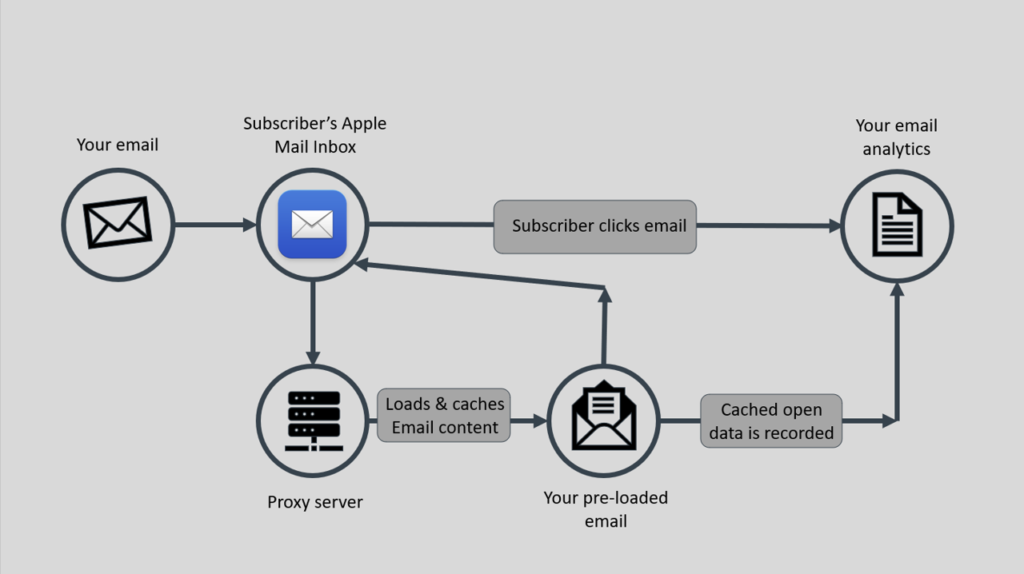
Source: Litmus
Should you care?
Market share data on email clients shows the Apple Mail client (iPhone, Mac, and iPad) has 49% of combined email opens as of the end of July 2021.
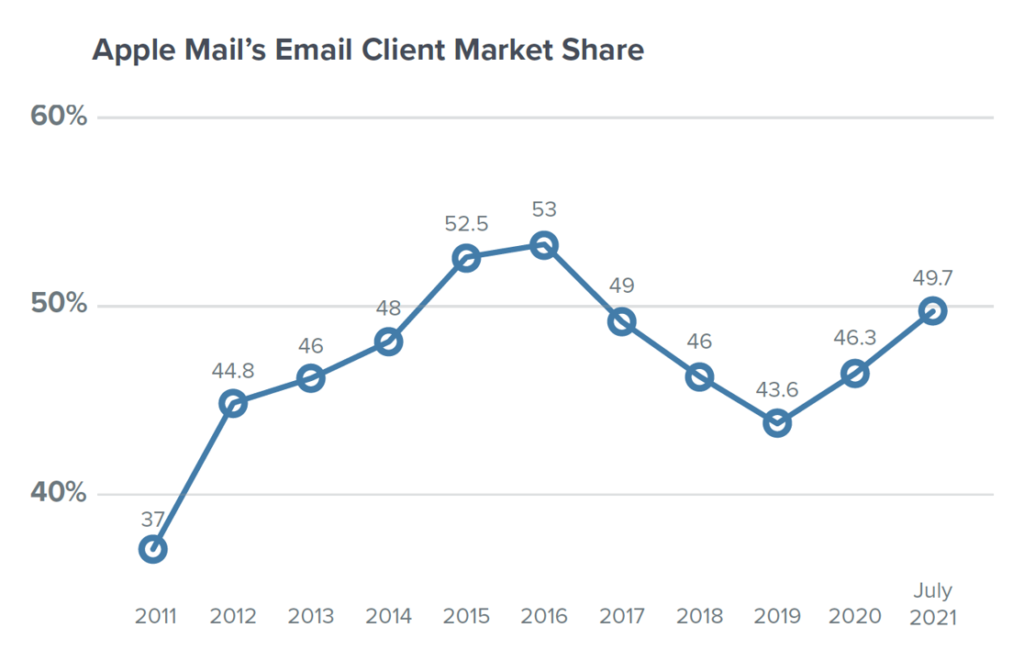
Source: Litmus
Understand how you are affected
According to Salesforce’s Joel Odom, Apple’s privacy upgrade will impact approximately 40% of Account Engagement emails.
If you have Account Engagement’s Advanced Email Analytics Package, review the email client report for your company’s emails. It allows you to capture and track email client usage for emails opened across your lists in Account Engagement. Read more here.

To see the Email Client breakdown, go to Account Engagement Reports > Marketing Assets > Email > List Emails
When you click on a list email, you should see the Email Clients tab.
In the image below, the pie chart on the left shows the Email Client Breakdown. Apple Phone, Apple Mail and Apple iPad will all be affected by Apple’s policy change. If you click on a “slice” of the pie, you can see more details in the pie chart on the right.
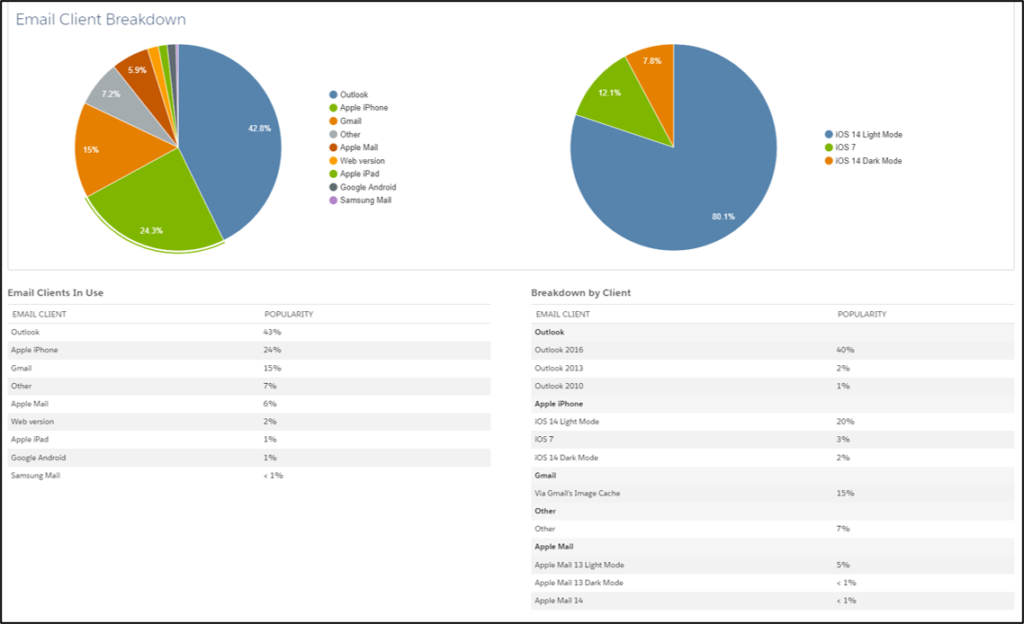
How Account Engagement users can prepare
So…what now?
Account Engagement users should do the following:
- Stop evaluating prospect engagement based on email opens.
- Because email open rates are still relevant, use the time RIGHT NOW to clean your Account Engagement database based on email open engagement.
- Re engineer your emails for click engagement. (For instance, I email my blog with only the first three sentences. Readers need to click to “Read More” to get the full blog text.)
- Review all automations using criteria for email opens.
- Check engagement programs that trigger from email opens.
- Audit scoring that uses email opens.
- Consider how you use A/B testing (based on open rates), and the Interaction report (shows “Read,” “Skimmed” from email opens).
- Salesforce modified the algorithm for Einstein Send Time Optimization (ESTO) to accommodate for the Apple enhancement. If you’re using Send Time Optimization, you can continue to do so.
Account Engagement User Group session
Watch this video to hear from Salesforce’s Director of Cybersecurity & Privacy Joel Odom about the topic.

